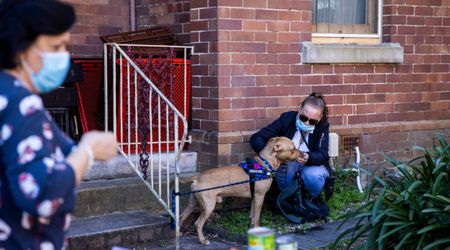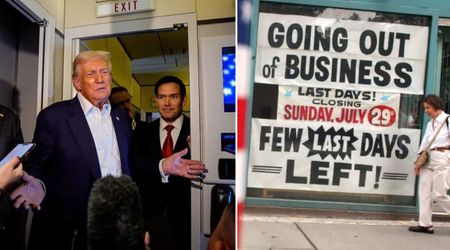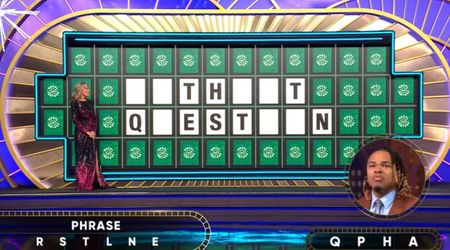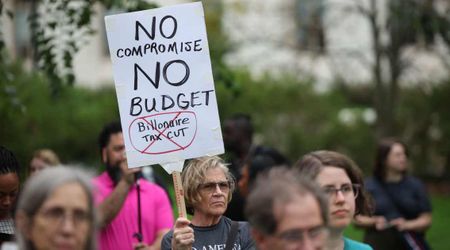Fourth of July: History of Independence Day Celebrations with Fireworks, and Some Safety Rules

The Fourth of July, the Amercian Independence Day, encompasses various traditions such as parades, cookouts and fireworks. It serves as a significant moment for Americans to unite in remembrance of the nation's inception and pay tribute to the visionary founding fathers who fought for freedom.
The Genesis of Independence Day
Independence Day commemorates the significant event when the Declaration of Independence was embraced by the Second Continental Congress on July 4, 1776, per Cordele Dispatch. This momentous document served as an announcement of the American colonies' decision to break free from their ties with Great Britain. Initially, celebrations were infrequent but in the aftermath of the War of 1812, Independence Day gained widespread popularity, becoming a beloved tradition across the entire nation.

The Founding Father Wanted to Celebrate with Illuminations
The use of fireworks has been an integral part of Independence Day celebrations since the beginning. Founding father John Adams envisioned grand celebrations with guns, bells, bonfires and illuminations (fireworks) to commemorate America's independence. Fireworks had a long history predating the birth of the United States, originating in ancient China and gradually spreading to Europe and the American colonies. The early settlers embraced this tradition and it has persisted as an emblematic element of Fourth of July festivities.

The President's Unconventional Position
John Adams had a distinctive viewpoint among the numerous US Presidents who wholeheartedly embraced the festivities of Independence Day. Unlike others, Adams firmly believed that the authentic Independence Day should be recognized on July 2, the date when the Continental Congress voted in favor of independence. This resolute conviction led Adams to refrain from participating in the celebrations on July 4, even during his tenure as the nation's second President.
Interestingly, fate had an ironic twist as both Adams and Thomas Jefferson, the primary author of the Declaration of Independence passed away on the very date they held in such significance—July 4, 1826, precisely 50 years after the formal adoption of the declaration.
The Growing Popularity of Fireworks
Fireworks have experienced a remarkable surge in popularity over the past couple of decades. There has been an exponential increase in consumer demand for fireworks, resulting in an impressive $2.3 billion in sales in 2022, per ABC News. The impact of the COVID-19 pandemic played a significant role in driving this surge as limitations on public fireworks displays prompted Americans to explore alternative ways to commemorate special occasions. As a result, local fireworks retailers became a preferred choice and the year-long celebration with fireworks became a widespread phenomenon.
Fourth of July falls on a Tuesday in 2023, offering a four-day weekend. Hence, it is anticipated that sales of fireworks will continue to thrive.

The Danger of Fireworks
While fireworks may bring joy and excitement, it is crucial to recognize their inherent risks. Mishandling fireworks leads to numerous cases of injury among Americans each year. According to the U.S. Consumer Product Safety Commission, in 2022 alone, 10,200 individuals required emergency room treatment for injuries caused by fireworks. To avoid accidents, it is of utmost importance to exercise caution and adhere to safety protocols.

Firework Safety Tips
This Fourth of July, let us celebrate with joy, unity and a commitment to preserving both tradition and safety. Here are some vital safety guidelines to remember while celebrating Independence Day.
Attend Public Displays: These shows provide stunning spectacles while minimizing the risks associated with personal fireworks.
Select Legal Fireworks: Illegitimate fireworks are often more hazardous and less predictable.
Designate a Responsible Adult: This person should familiarize themselves with the instructions and adhere to all safety precautions.
Create a Safe Environment: Keep a bucket of water or hose nearby to swiftly extinguish any small fires or accidents.
Maintain a Safe Distance: Keep a safe distance from ignited fireworks.
Never Relight or Handle Malfunctioning Fireworks: If a firework fails to ignite, then wait for at least 20 minutes and then soak it in water before properly disposing of it.
Protect Yourself: Wear safety glasses to shield your eyes and designate a separate area where spectators can watch the fireworks from a safe distance. Keep pets indoors as fireworks can cause distress to animals.























